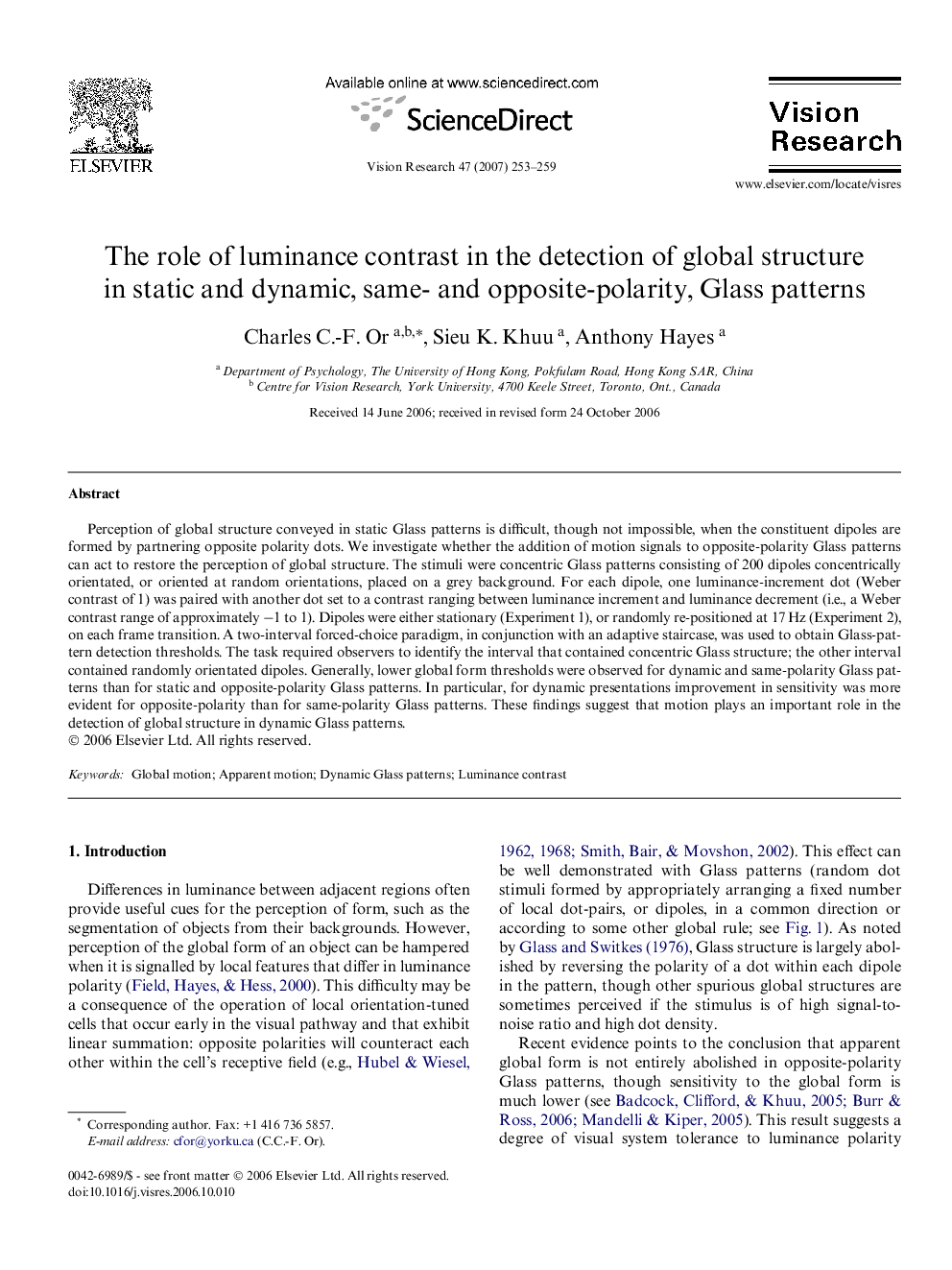| Article ID | Journal | Published Year | Pages | File Type |
|---|---|---|---|---|
| 4036010 | Vision Research | 2007 | 7 Pages |
Perception of global structure conveyed in static Glass patterns is difficult, though not impossible, when the constituent dipoles are formed by partnering opposite polarity dots. We investigate whether the addition of motion signals to opposite-polarity Glass patterns can act to restore the perception of global structure. The stimuli were concentric Glass patterns consisting of 200 dipoles concentrically orientated, or oriented at random orientations, placed on a grey background. For each dipole, one luminance-increment dot (Weber contrast of 1) was paired with another dot set to a contrast ranging between luminance increment and luminance decrement (i.e., a Weber contrast range of approximately −1 to 1). Dipoles were either stationary (Experiment 1), or randomly re-positioned at 17 Hz (Experiment 2), on each frame transition. A two-interval forced-choice paradigm, in conjunction with an adaptive staircase, was used to obtain Glass-pattern detection thresholds. The task required observers to identify the interval that contained concentric Glass structure; the other interval contained randomly orientated dipoles. Generally, lower global form thresholds were observed for dynamic and same-polarity Glass patterns than for static and opposite-polarity Glass patterns. In particular, for dynamic presentations improvement in sensitivity was more evident for opposite-polarity than for same-polarity Glass patterns. These findings suggest that motion plays an important role in the detection of global structure in dynamic Glass patterns.
